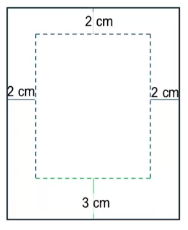In applied optimization problems, we often seek to maximize or minimize a specific value, such as area, under given constraints. A classic example involves using a fixed amount of fencing to create a rectangular area, where one side is formed by an existing structure, like a rock wall. In this scenario, we have 200 feet of fencing available to construct three sides of a rectangle, and our goal is to determine the dimensions that yield the maximum area.
To begin, we can express the area \( A \) of the rectangle as a function of its dimensions. The area is calculated as the product of length and width, represented by the equation \( A = x \cdot y \), where \( x \) is the length and \( y \) is the width. Given the constraint of 200 feet of fencing, we can derive a relationship between \( x \) and \( y \) based on the perimeter. The perimeter for our three sides can be expressed as \( 2x + y = 200 \). By rearranging this equation, we find \( y = 200 - 2x \). Substituting this expression for \( y \) into the area function gives us \( A = x(200 - 2x) = 200x - 2x^2 \).
Next, we need to determine the domain of our function. Since dimensions cannot be negative, we establish that \( x \) must be greater than or equal to 0. Additionally, since the total fencing is 200 feet, if both lengths \( x \) are maximized to 100 feet, then \( y \) would be 0, leading to the restriction \( x \leq 100 \). Thus, our domain is \( 0 \leq x \leq 100 \).
To find the maximum area, we calculate the critical points by taking the derivative of the area function. The first derivative is \( A' = 200 - 4x \). Setting this equal to zero to find critical points, we solve \( 200 - 4x = 0 \), yielding \( x = 50 \). We must also evaluate the endpoints of our domain, \( x = 0 \) and \( x = 100 \).
Now, we evaluate the area at these points: - For \( x = 0 \): \( A(0) = 200(0) - 2(0)^2 = 0 \)- For \( x = 100 \): \( A(100) = 200(100) - 2(100)^2 = 0 \)- For \( x = 50 \): \( A(50) = 200(50) - 2(50)^2 = 5000 \)The maximum area occurs at \( x = 50 \), resulting in an area of 5000 square feet. To find the corresponding width \( y \), we substitute \( x = 50 \) back into the equation for \( y \): \( y = 200 - 2(50) = 100 \). Therefore, the dimensions that maximize the area are 50 feet by 100 feet.
In summary, when solving applied optimization problems, it is essential to define the function to be optimized, establish constraints, determine the domain, find critical points, and evaluate the function at these points to identify maximum or minimum values. Depending on whether the interval is closed or open, the method for determining these values may vary, utilizing either the extreme value theorem or the second derivative test.



